-
 Bitcoin
Bitcoin $106,731.2224
-1.05% -
 Ethereum
Ethereum $2,444.9804
-1.20% -
 Tether USDt
Tether USDt $1.0003
0.01% -
 XRP
XRP $2.1882
0.09% -
 BNB
BNB $651.1435
-0.61% -
 Solana
Solana $148.3252
-2.09% -
 USDC
USDC $1.0000
0.01% -
 TRON
TRON $0.2787
0.55% -
 Dogecoin
Dogecoin $0.1598
-3.16% -
 Cardano
Cardano $0.5520
-2.43% -
 Hyperliquid
Hyperliquid $39.0960
-2.64% -
 Bitcoin Cash
Bitcoin Cash $516.9519
2.98% -
 Sui
Sui $2.7011
-2.95% -
 Chainlink
Chainlink $13.0582
-1.71% -
 UNUS SED LEO
UNUS SED LEO $8.9250
-2.53% -
 Stellar
Stellar $0.2359
-0.18% -
 Avalanche
Avalanche $17.3856
-3.73% -
 Toncoin
Toncoin $2.8095
-3.56% -
 Shiba Inu
Shiba Inu $0.0...01121
-1.95% -
 Litecoin
Litecoin $85.2795
-0.85% -
 Hedera
Hedera $0.1471
-2.15% -
 Monero
Monero $319.8004
1.12% -
 Dai
Dai $1.0001
0.01% -
 Ethena USDe
Ethena USDe $1.0001
0.02% -
 Bitget Token
Bitget Token $4.5344
-1.07% -
 Polkadot
Polkadot $3.3224
-2.96% -
 Uniswap
Uniswap $6.9697
-2.75% -
 Aave
Aave $266.1658
-2.25% -
 Pepe
Pepe $0.0...09414
-3.41% -
 Pi
Pi $0.4913
-3.29%
What is the liquidation mechanism of LBank contract? How to avoid forced liquidation?
LBank's liquidation occurs when a trader's margin falls below the maintenance level, automatically closing positions to manage risk and maintain market stability.
May 04, 2025 at 10:36 pm

Understanding the Liquidation Mechanism of LBank Contract
LBank, a leading cryptocurrency exchange, offers futures trading through its contract platform. The liquidation mechanism is a critical component of this system, designed to manage risk and maintain the stability of the market. Liquidation occurs when a trader's position is forcibly closed due to insufficient margin to cover potential losses. This mechanism ensures that the exchange can cover losses from traders who are unable to meet their margin requirements.
The process of liquidation on LBank is automated and triggered when the margin level of a trader's account falls below a certain threshold, known as the maintenance margin. When this happens, the exchange will automatically close the trader's position to prevent further losses. The liquidation price is calculated based on the position size, entry price, and the amount of margin in the account.
Key Factors Influencing Liquidation
Several factors can influence the likelihood of liquidation on LBank. The most significant factor is the volatility of the cryptocurrency being traded. High volatility can lead to rapid price movements, increasing the risk of margin calls and subsequent liquidation. Additionally, the leverage used by a trader plays a crucial role. Higher leverage amplifies both potential gains and losses, making positions more susceptible to liquidation.
Another factor to consider is the size of the position relative to the account balance. Larger positions require more margin to maintain, increasing the risk of liquidation if the market moves against the trader. The maintenance margin requirement set by LBank also affects the liquidation threshold. Traders must ensure their account balance remains above this requirement to avoid forced liquidation.
How to Avoid Forced Liquidation on LBank
To avoid forced liquidation, traders must manage their risk effectively. One of the most effective strategies is to use stop-loss orders. A stop-loss order automatically closes a position when the price reaches a predetermined level, limiting potential losses. By setting a stop-loss at a safe distance from the entry price, traders can protect their positions from significant adverse movements.
Adjusting leverage is another crucial step in avoiding liquidation. Lower leverage reduces the risk of margin calls, as it requires less margin to maintain the position. Traders should assess their risk tolerance and adjust their leverage accordingly. Regular monitoring of positions is also essential. By keeping a close eye on market movements and account balances, traders can take timely action to add more margin or close positions if necessary.
Diversifying trading strategies can also help mitigate the risk of liquidation. Instead of relying on a single position, traders can spread their risk across multiple assets and strategies. This approach can cushion the impact of adverse price movements in any single asset.
Practical Steps to Manage Risk on LBank
To effectively manage risk and avoid liquidation on LBank, follow these practical steps:
Set appropriate stop-loss orders: Determine a stop-loss level that limits potential losses while allowing for normal market fluctuations. For example, if you enter a long position on Bitcoin at $50,000, you might set a stop-loss at $48,000 to limit your loss to 4%.
Monitor your positions regularly: Use LBank's trading platform to keep an eye on your account balance and the performance of your positions. Set alerts for significant price movements or when your margin level approaches the maintenance margin.
Adjust leverage based on risk tolerance: If you are a conservative trader, consider using lower leverage to reduce the risk of margin calls. For instance, instead of using 100x leverage, you might opt for 10x or 20x.
Add margin when necessary: If the market moves against your position, you may need to add more margin to your account to maintain it. This can be done by depositing additional funds or closing other positions to free up margin.
Diversify your trading portfolio: Instead of focusing on a single asset, consider trading multiple cryptocurrencies with different risk profiles. This can help balance your overall risk exposure.
Understanding Margin Calls and Maintenance Margin
A margin call occurs when the value of a trader's account falls below the maintenance margin requirement. This is a warning that the account is at risk of liquidation. When a margin call is triggered, traders must either add more funds to their account or close positions to restore the margin level.
The maintenance margin is the minimum amount of margin required to keep a position open. This requirement is set by LBank and varies depending on the asset and leverage used. For example, if the maintenance margin for a Bitcoin futures contract is 0.5%, a trader must maintain at least 0.5% of the total position value in their account to avoid liquidation.
Calculating Liquidation Price
Understanding how to calculate the liquidation price is crucial for managing risk. The liquidation price is the price at which a position will be automatically closed due to insufficient margin. The formula for calculating the liquidation price depends on whether the position is long or short.
For a long position, the liquidation price can be calculated as follows:
[ \text{Liquidation Price} = \text{Entry Price} \times \left(1 - \frac{\text{Maintenance Margin}}{\text{Leverage}}\right) ]
For a short position, the liquidation price is calculated as:
[ \text{Liquidation Price} = \text{Entry Price} \times \left(1 + \frac{\text{Maintenance Margin}}{\text{Leverage}}\right) ]
By understanding these formulas, traders can better predict when their positions might be at risk of liquidation and take appropriate action.
FAQs
Q: Can I adjust my stop-loss order after it has been set on LBank?
A: Yes, you can adjust your stop-loss order at any time on LBank. To do so, go to your open positions, select the position with the stop-loss order you want to modify, and adjust the stop-loss price as needed. Remember that adjusting your stop-loss too close to the current market price can increase the risk of the order being triggered prematurely.
Q: What happens if I cannot meet a margin call on LBank?
A: If you cannot meet a margin call, your position will be liquidated automatically. LBank will close your position at the current market price to cover the losses. It is crucial to monitor your account closely and add margin or close positions if you receive a margin call to avoid this situation.
Q: How does LBank handle partial liquidation?
A: LBank does not support partial liquidation. If your account falls below the maintenance margin, the entire position will be liquidated. To manage risk, you can close part of your position manually if you believe the market is moving against you.
Q: Can I use a trailing stop-loss on LBank to avoid liquidation?
A: Yes, LBank supports trailing stop-loss orders. A trailing stop-loss adjusts automatically as the market price moves in your favor, helping to lock in profits while still protecting against significant losses. To set a trailing stop-loss, go to your open positions, select the position, and choose the trailing stop-loss option, specifying the trail amount or percentage.
Disclaimer:info@kdj.com
The information provided is not trading advice. kdj.com does not assume any responsibility for any investments made based on the information provided in this article. Cryptocurrencies are highly volatile and it is highly recommended that you invest with caution after thorough research!
If you believe that the content used on this website infringes your copyright, please contact us immediately (info@kdj.com) and we will delete it promptly.
- Deutsche Bank's Bitcoin Custody Play: A New York Minute on Crypto Services
- 2025-07-01 22:30:12
- ZachXBT, Ripple, and RLUSD Adoption: A Deep Dive
- 2025-07-01 22:30:12
- Open XP Redemption on Optimism: Get Ready for OP Tokens on July 15!
- 2025-07-01 22:35:12
- Altcoins in June 2025: Data, Trends, and What's Next for Crypto
- 2025-07-01 21:30:12
- SUI Price Breakout Watch: Will 2025 Forecasts Hit the Mark?
- 2025-07-01 21:30:12
- BTCBULL: Riding Bitcoin's Bull Run to Crypto Glory
- 2025-07-01 20:30:11
Related knowledge
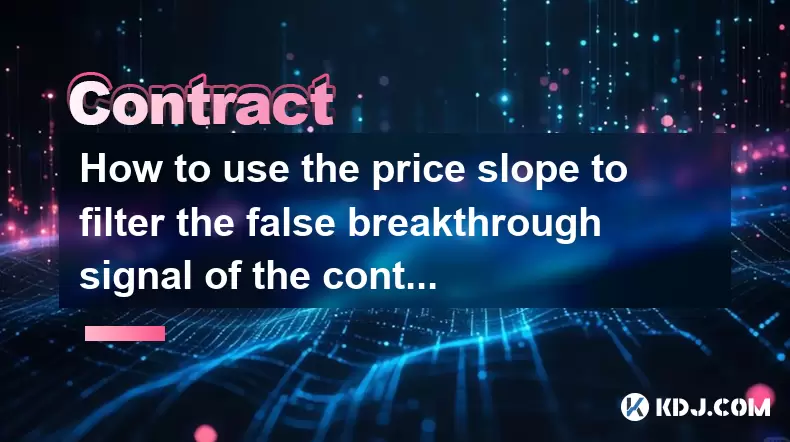
How to use the price slope to filter the false breakthrough signal of the contract?
Jun 20,2025 at 06:56pm
Understanding the Concept of Price Slope in Contract TradingIn contract trading, especially within cryptocurrency derivatives markets, price slope refers to the rate at which the price changes over a specific time period. It helps traders assess the strength and sustainability of a trend. A steep slope may indicate strong momentum, while a shallow slope...
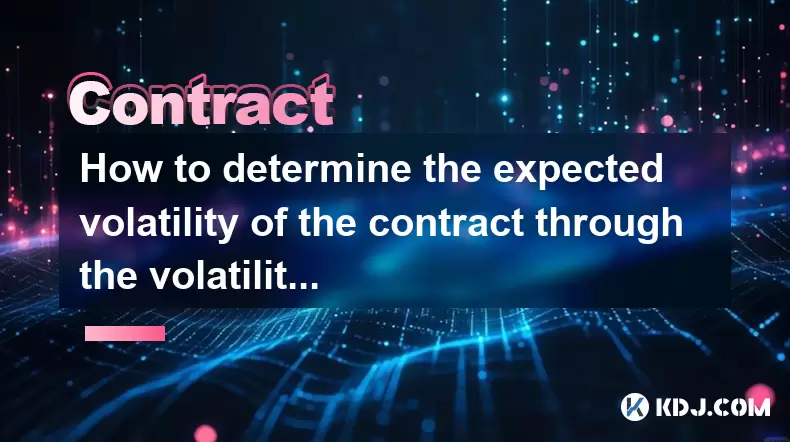
How to determine the expected volatility of the contract through the volatility cone?
Jun 19,2025 at 12:28pm
Understanding the Basics of Volatility in Cryptocurrency ContractsIn the realm of cryptocurrency trading, volatility is a key metric that traders use to assess potential risk and reward. When dealing with futures contracts, understanding how volatile an asset might become over time is crucial for position sizing, risk management, and strategy developmen...
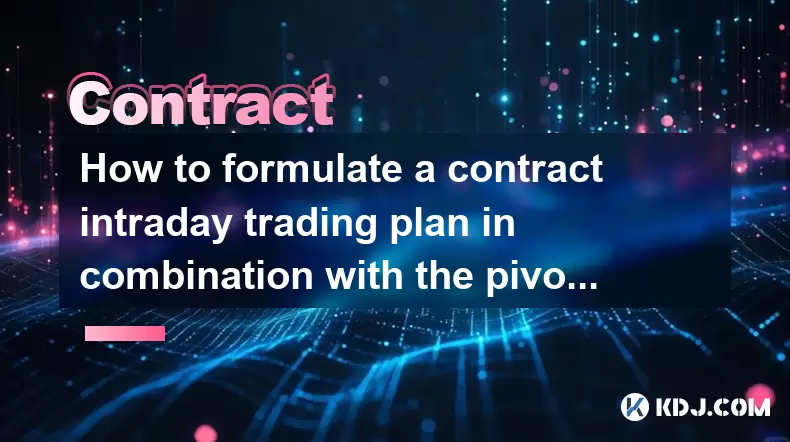
How to formulate a contract intraday trading plan in combination with the pivot point system?
Jun 21,2025 at 03:42pm
Understanding the Basics of Pivot Points in Cryptocurrency TradingPivot points are technical analysis tools used by traders to identify potential support and resistance levels. These levels are calculated using the previous day's high, low, and closing prices. In the context of cryptocurrency trading, where markets operate 24/7, pivot points help trader...
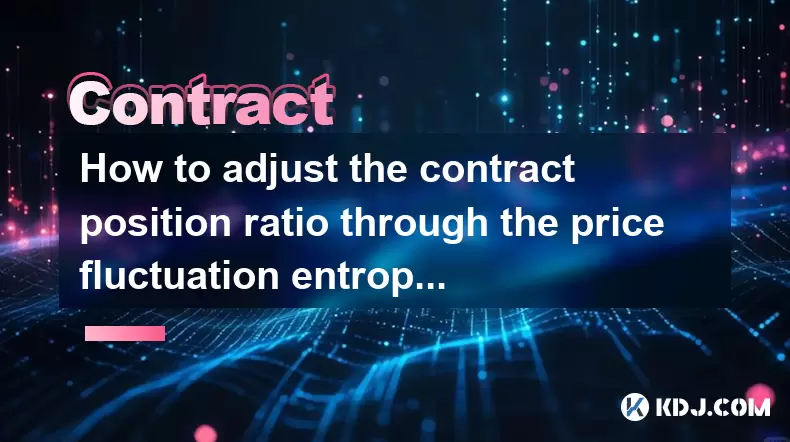
How to adjust the contract position ratio through the price fluctuation entropy?
Jun 22,2025 at 11:42am
Understanding Price Fluctuation Entropy in Cryptocurrency ContractsIn the world of cryptocurrency futures trading, price fluctuation entropy is a relatively new concept used to measure market volatility and uncertainty. It derives from information theory, where entropy refers to the degree of randomness or unpredictability in a system. In crypto contrac...
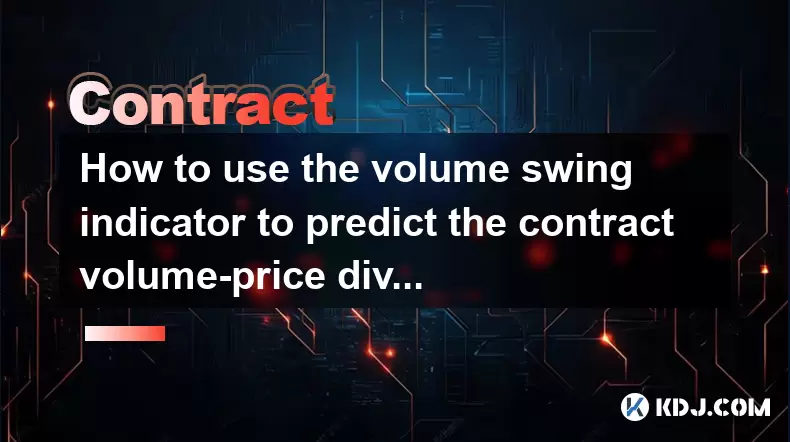
How to use the volume swing indicator to predict the contract volume-price divergence?
Jun 18,2025 at 11:42pm
Understanding the Volume Swing IndicatorThe volume swing indicator is a technical analysis tool used primarily in cryptocurrency trading to evaluate changes in volume over time. Unlike price-based indicators, this metric focuses solely on trading volume, which can provide early signals about potential market reversals or continuations. The key idea behi...

How to use the Gaussian channel to set the contract trend tracking stop loss?
Jun 18,2025 at 09:21pm
Understanding the Gaussian Channel in Cryptocurrency TradingThe Gaussian channel is a technical indicator used primarily in financial markets, including cryptocurrency trading, to identify trends and potential reversal points. It is based on statistical principles derived from the normal distribution, commonly known as the Gaussian distribution or bell ...

How to use the price slope to filter the false breakthrough signal of the contract?
Jun 20,2025 at 06:56pm
Understanding the Concept of Price Slope in Contract TradingIn contract trading, especially within cryptocurrency derivatives markets, price slope refers to the rate at which the price changes over a specific time period. It helps traders assess the strength and sustainability of a trend. A steep slope may indicate strong momentum, while a shallow slope...

How to determine the expected volatility of the contract through the volatility cone?
Jun 19,2025 at 12:28pm
Understanding the Basics of Volatility in Cryptocurrency ContractsIn the realm of cryptocurrency trading, volatility is a key metric that traders use to assess potential risk and reward. When dealing with futures contracts, understanding how volatile an asset might become over time is crucial for position sizing, risk management, and strategy developmen...

How to formulate a contract intraday trading plan in combination with the pivot point system?
Jun 21,2025 at 03:42pm
Understanding the Basics of Pivot Points in Cryptocurrency TradingPivot points are technical analysis tools used by traders to identify potential support and resistance levels. These levels are calculated using the previous day's high, low, and closing prices. In the context of cryptocurrency trading, where markets operate 24/7, pivot points help trader...

How to adjust the contract position ratio through the price fluctuation entropy?
Jun 22,2025 at 11:42am
Understanding Price Fluctuation Entropy in Cryptocurrency ContractsIn the world of cryptocurrency futures trading, price fluctuation entropy is a relatively new concept used to measure market volatility and uncertainty. It derives from information theory, where entropy refers to the degree of randomness or unpredictability in a system. In crypto contrac...

How to use the volume swing indicator to predict the contract volume-price divergence?
Jun 18,2025 at 11:42pm
Understanding the Volume Swing IndicatorThe volume swing indicator is a technical analysis tool used primarily in cryptocurrency trading to evaluate changes in volume over time. Unlike price-based indicators, this metric focuses solely on trading volume, which can provide early signals about potential market reversals or continuations. The key idea behi...

How to use the Gaussian channel to set the contract trend tracking stop loss?
Jun 18,2025 at 09:21pm
Understanding the Gaussian Channel in Cryptocurrency TradingThe Gaussian channel is a technical indicator used primarily in financial markets, including cryptocurrency trading, to identify trends and potential reversal points. It is based on statistical principles derived from the normal distribution, commonly known as the Gaussian distribution or bell ...
See all articles

























































































